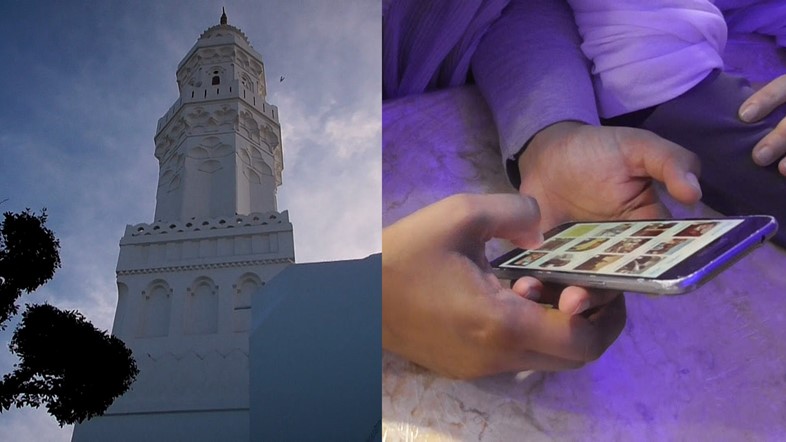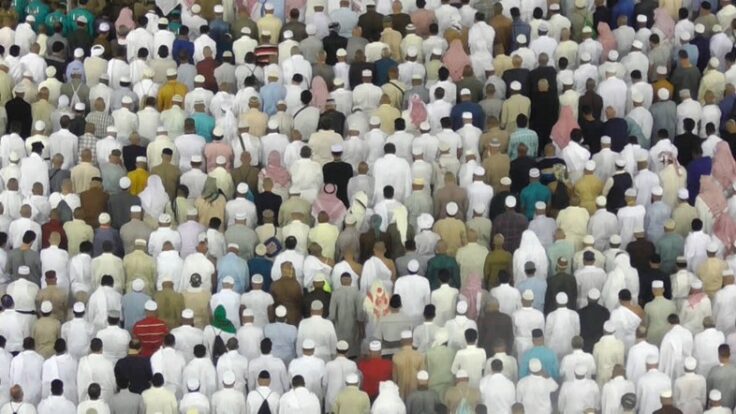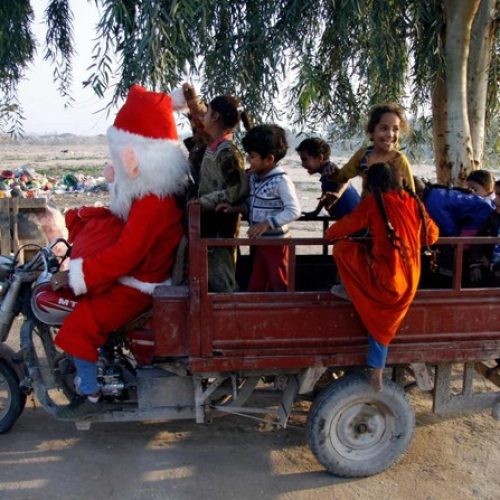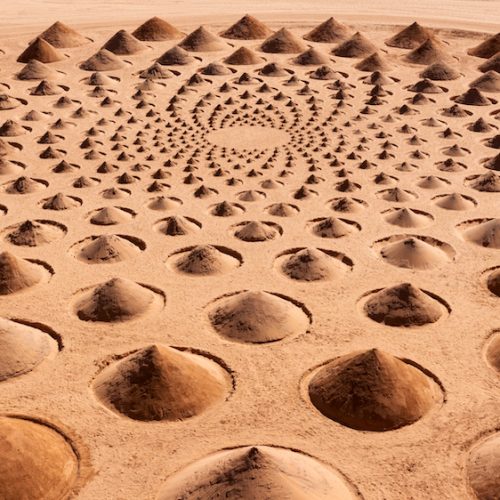To some of us from the Middle East our relation to faith is cultural, in the daily practise of ritual both in the community and at home. However, whilst serving faith is largely serving both a social and shared space, relation to faith is an extremely special and personal experience, that we rarely articulate beyond moments of shared devotion.
Filmmaker and creative director Kazim Rashid took on the responsibility of translating his personal faith for a special commission by Nowness, through the holy trip to Masjid al-Harem in Saudi Arabia. It is this very navigation of an embodied journey and spiritual mapping that disallows the film to be considered a marketing ploy as can often be the case with commissions from Western cultural institutions.
At a distance or first-viewing, Rashid’s film is striking for its very interrogation of religion’s existence between the dichotomy of the private and the personal. Visualised through the use of a split-frame, images of a woman washing her feet show both the public and private practise of ritual as simultaneously embodied and participating in a wider cultural practise.

The film opens in a busy square, material in its sensorial overload both in terms of haptic vision and sound. The viewer experiences these senses closely through ontic memory, whilst the use of the subjective handheld camera brings further immediacy to the viewer as they themselves navigate the square as contained within the frame.
Just as the viewer surveys the unfolding action of the film, surveillance itself acts as a motif, veiled within tradition and community-building but often castrating to those whose personal relationship to faith differs to popular practise. Surveillance is often practised via censorship, played out in the film through the privilege of occupied space, which is usually censored within a religious building or institution. Every frame in Rashid’s film is occupied by a religious person or metonymically substituted by a religious object. It is this enabling of ‘public’ space which sometimes denies surveyed expression of personal faith, or those who cannot physically travel to Mecca such as his grandmother who could not obtain her visa.
The film invites and opens a conversation of religious practise and the experience of faith, with the use of both diegetic sound and noise in the film showing the occupancy of religion, faith and spirituality in our lives. Whether this prevalence is experienced as noise in the background or as a diegetic teaching we wish to listen to, Rashid’s film is a beautiful conversation of faith in its multitudes and we only hope his visual essay is as much a journey for its viewers too.









